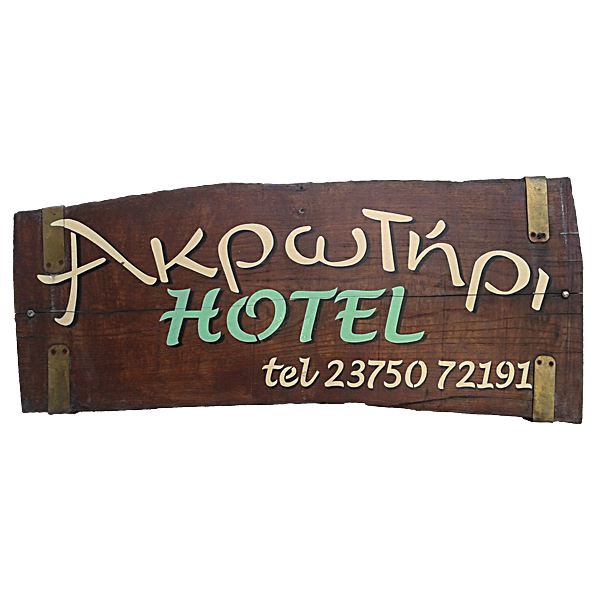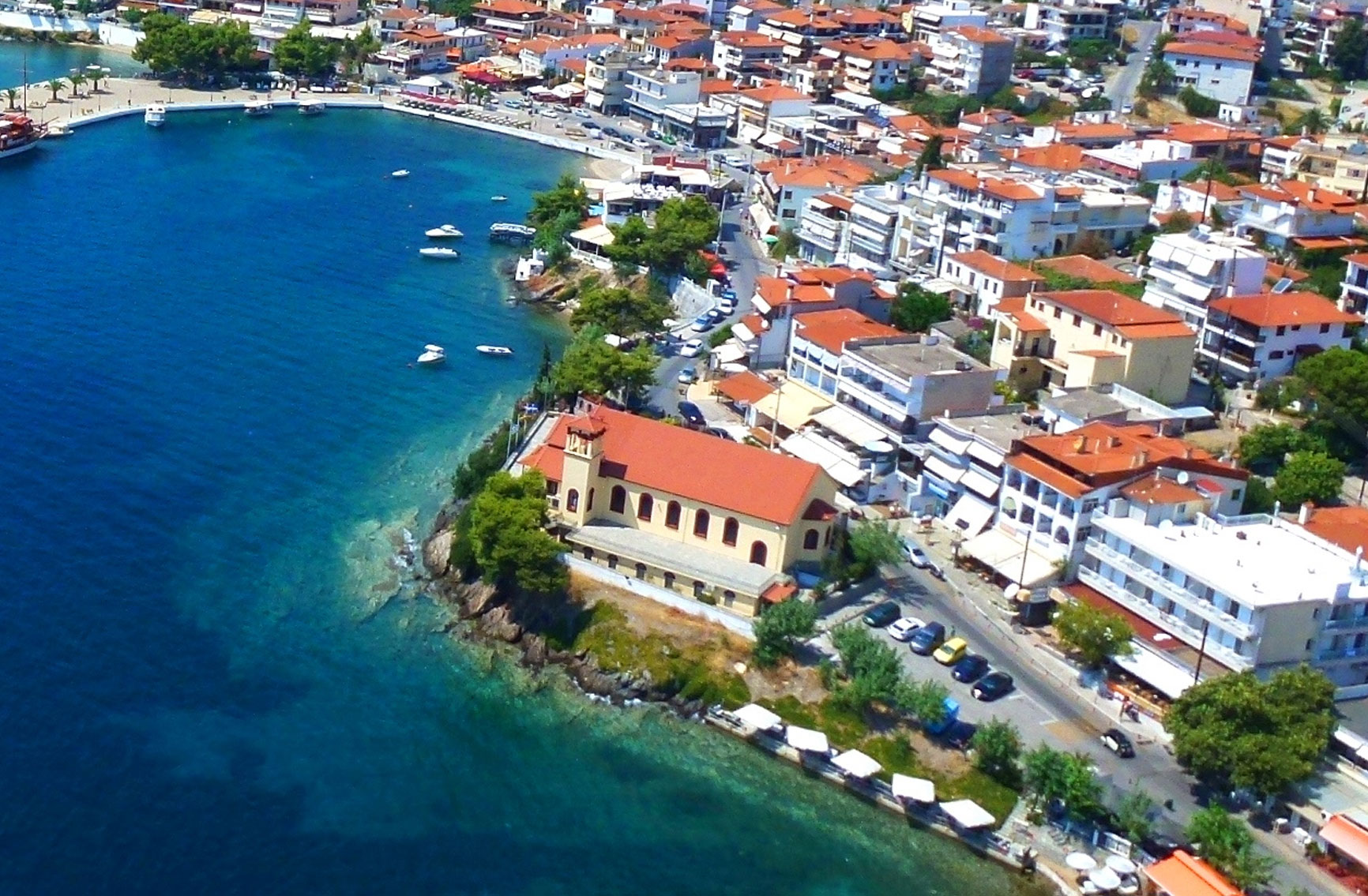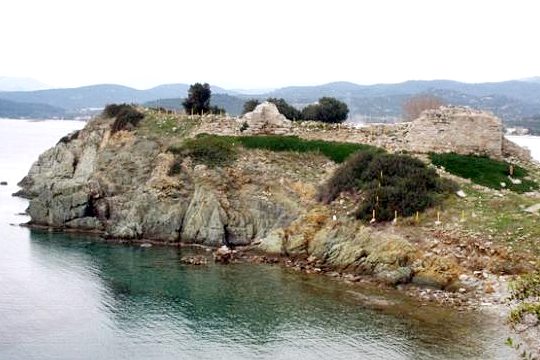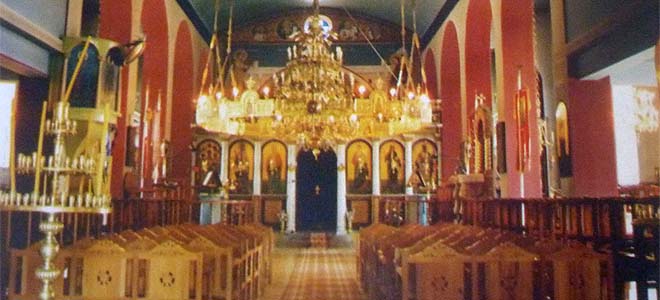Our Sithonia is rich; not only in beaches with crystal clear water but also castles, churches, temples and chapels, all rich in history. So join us for a brief sightseeing tour.
 Church of the Archangels, Neos Marmaras
Church of the Archangels, Neos Marmaras
The main church of the village with many heirlooms from the lost homeland. The church also hosts a unique, intact epitaph.
 The Chapel of Prophet Elias
The Chapel of Prophet Elias
The chapel of Prophet Elias is only a few minutes by car or a short walk up the hill above Neos Marmaras. With pine trees surrounding it, this place offers stunning panoramic views of the valley and the sea. The sunset is an unforgettable experience!
It is open all day.
 The monastery of Saint Gregory
The monastery of Saint Gregory
Although no one inhabits the place today, visitors can wander around its premises.
 The Castle of Toroni
The Castle of Toroni
Ruins of medieval fortification at Cape Lycithus, located on the southern end of Toroni beach in Halkidiki.
Archaeologists unearthed traces of habitation from the Early Bronze Age (3rd millennium BC) and the remains of early Iron Age houses (11th – 8th centuries BC). In antiquity, there was one of the two citadels of Toroni with a strong wall. Thucydides mentions details of the Spartans’ fortification in Lycithus and mentions a temple of Athena that they built there.
The Halkidians founded the city in the 8th century BC. It became one of the most important ancient Greek cities of Northern Greece. It was part of the dispute between the Lacedaemonians and the Athenians. Later, throughout the Byzantine period, there was a powerful castle in the peninsula, which they built mostly with material from the ancient acropolis.
Both the settlement that had developed on the peninsula and the castle were destroyed in the 15th or 16th century. The area must have suffered greatly from pirate attacks and was in decline much earlier, while in the 14th century it belonged to Mount Athos.
 The Early Christian Basilica of Saint Athanasius
The Early Christian Basilica of Saint Athanasius
Triple basilica of the 5th century. It is located in the small swamp, next to the highway between Toroni and Porto Koufo.
A fire destroyed the church in the 6th century and the locals built another smaller church in its place.
 The chapel of Saint George
The chapel of Saint George
The chapel of St. George is built on the middle aisle of a three-aisled 5th-century basilica Christian church, which must have been destroyed in the 6th century AD. along with the most important settlement of the time. The settlement appeared during the Hellenistic years (3rd – 2nd century BC) and developed rapidly on the hills north of St. George.
The early Christian basilica on which they built the chapel we see today, according to the findings of the 1971 excavation, was a beautiful church divided into three aisles, with three pairs of marble columns and a marble slab temple. To the south-east of the church was the cemetery of the settlement. Archaeologists found there two large vaulted tombs. Further excavations in 1979 revealed a Roman bath, which they may have used as a baptistery.
 In 1981 the 10th Ephorate of Byzantine Antiquities conducted excavations 60m. north-west of St. Basil’s Basilica where they found the central temple of the settlement. Today it is the most valuable archaeological site of the Municipality of Sithonia and one of the most important in the whole of Halkidiki.
In 1981 the 10th Ephorate of Byzantine Antiquities conducted excavations 60m. north-west of St. Basil’s Basilica where they found the central temple of the settlement. Today it is the most valuable archaeological site of the Municipality of Sithonia and one of the most important in the whole of Halkidiki.
 The Church of Saint Nikitas
The Church of Saint Nikitas
We find the church of St Nikitas in the middle of the village of Nikiti. It was built in the second half of the 19th century, St Nikitas is one of the oldest and most important buildings in the area. The history of the church is intertwined with the historical evolution of the settlement, the passions, the joys and the dramas of the inhabitants.
 The Church of Holy Mary’s Assumption
The Church of Holy Mary’s Assumption
East of Neos Marmaras lies the church of Holy Mary’s Assumption. It is part of the Gregorian Monastery and was built in 1865.

The Early Christian Basilica of Sofronius
The building is dated from the first half of the 5th century AD. The three-storey wood-panelled Early Christian Basilica of Sofronius constitutes a large Early Christian complex. With magnificent mosaics and the rare high-quality multicoloured marble, columns, pillars and shields. Conservationists of the Byzantine Antiquities Authority restored it recently. It is very popular with visitors mainly during the summer season. The name of the complex derives from one of the inscriptions preserved in the church under the name of Bishop Sofronius.
We also recommend a visit to the Metochi of Xiropotamos Monastery in Sarti, as well as the ruins of the ancient temple and the windmills in Sykia.













